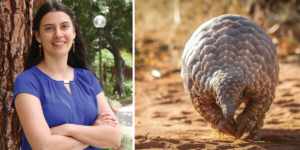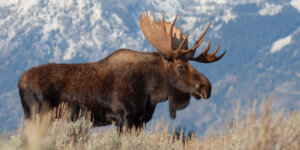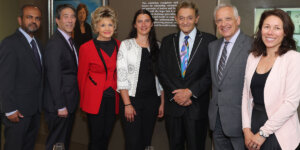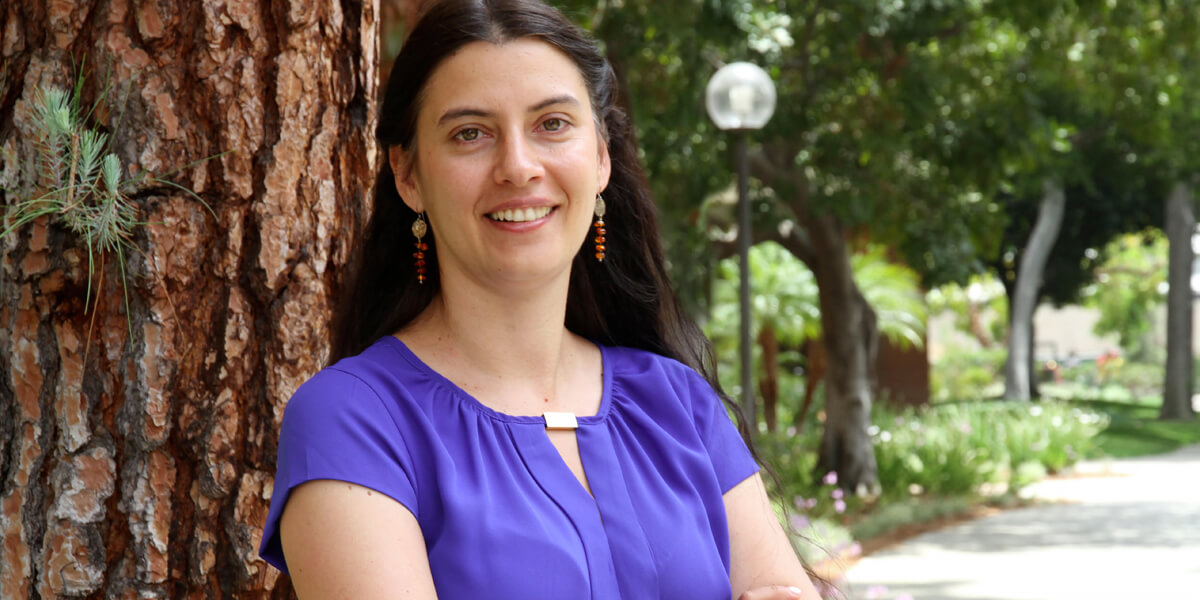
USC computer scientist Bistra Diklina develops AI tools that could help conservationists expand their work and bring species back from the brink. Photo/Caitlin Dawson.
From sea otters and pandas to elephants, tigers and polar bears — plummeting wildlife populations have become a harsh reminder that human activity is having a devastating impact on the planet and its resources. Action is needed, and fast: 20 percent of species currently face extinction and experts warn that number could rise to 50 per cent by 2100. But protecting endangered wildlife is an expensive, time-consuming task for cash-strapped conservation groups.
Enter a new generation of artificial intelligence (AI) tools that could help conservationists expand their work and bring species back from the brink. One researcher at the forefront of using AI for wildlife protection is Bistra Dilkina, WiSE Gabilan Assistant Professor in Computer Science.
Dilkina, an associate director at USC’s Center for Artificial Intelligence in Society (CAIS), develops mathematical optimization techniques to tackle real-world problems, especially in sustainability, such as biodiversity conservation planning and urban planning.
Mathematical optimization can help in decision-making processes by selecting the best option from a set of alternatives, which is especially crucial in solving complex problems with limited resources, as is the case with nature conservation.
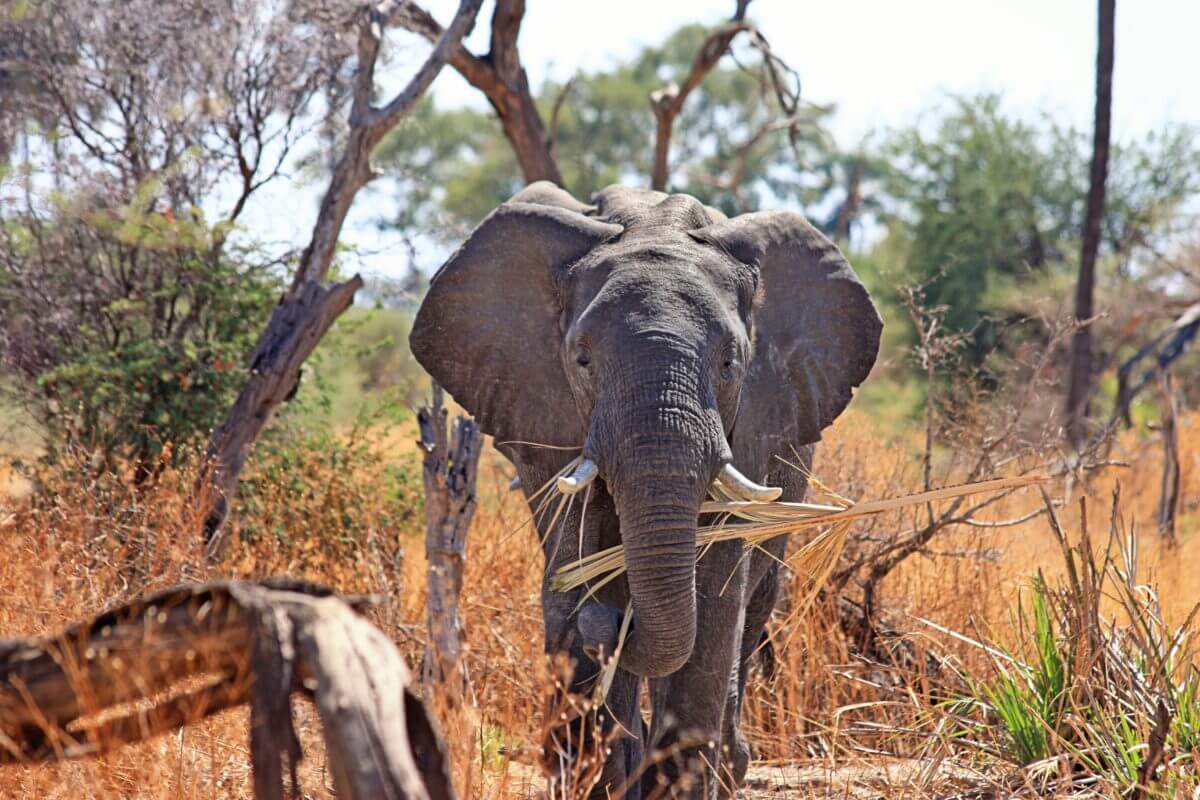
Earth’s disappearing wildlife: Between 1970 and 2014, populations of vertebrates declined by 60 percent on average. Source/WWF Living Planet Report, 2018. Photo/Pexels.
In partnership with the world’s leading wildlife conservation groups, Dilkina and her graduate students are developing algorithms to help address several pressing environmental needs, from predicting where poachers are likely to strike next, to designing optimal wildlife reserves and preventing the spread of invasive species.
Dilkina joined USC in January 2018 from the Georgia Institute of Technology, where she developed optimization techniques to identify cost-effective biodiversity corridors, connecting isolated populations of rare, threatened and endangered species living in protected areas.
Her research has garnered broad recognition: in 2017, she received the UN Data for Climate Action Challenge Award in Climate Adaptation for her work on predicting and alleviating road flooding, and she has received awards from KDD Applied Data Science, Raytheon and AAAI, among others.
We discussed her recent work, including a collaboration on the PAWS AI software poised to combat poachers in nearly 600 wildlife parks, as well as her introduction to wildlife conservation, and her belief that AI could help save endangered species and their habitats.
Professor Dilkina, please tell us about your research in a nutshell.
The basic idea is that managing the biodiversity extinction crisis requires wise decision-making processes able to account for the limited resources available. In other words, conservation efforts need to make a big impact on a small budget. You have to make sure that the investment and the method is as effective as possible—that’s where our algorithms come in.
“Conservation efforts need to make a big impact on a small budget.” Bistra Dilkina.
A lot of our work is done in partnership with NGOs—they have huge amounts of real data and want to work with us because of a complex problem they’re trying to solve. In most decision problems in conservation biology, for instance, several conflicting objectives have to be taken into account. For example, if there are multiple species that need conservation action in the same area, how do we create conservation plans that balance costs and ecological benefits while taking into account also the priority each species is given? We create algorithms that take these complexities into account to find the optimal solution to a specific problem.
Let’s go back to the beginning. Where did you grow up? What was your dream job when you were young?
I’m originally from Bulgaria. My mom is a math teacher, and growing up, I always wanted to become a computer scientist. But it really became a passion for me in fifth grade when I learned to program—I was always good at math, but I like programming even more because you can make the computer do things for you! To me, that felt very empowering. It still does.
How did you get interested in AI for conservation and social good?
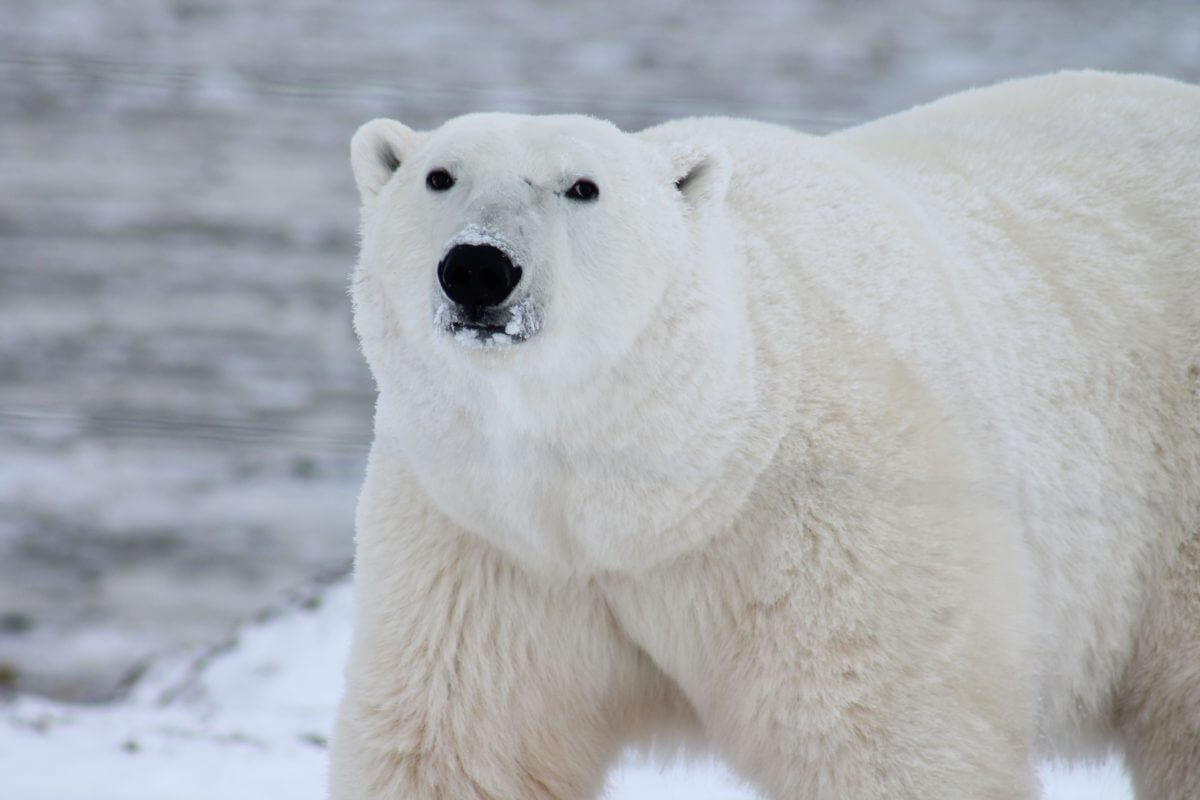
The number one cause of the decline is habitat loss and degradation, which accounts for nearly half of all threats within each taxonomic group. The No. 2 overall cause is overexploitation. Source/WWF Living Planet Report, 2018. Photo/Pexels.
I think I’ve always had an internal nudge to create solutions to real problems, but it wasn’t until my Ph.D. at Cornell that I got involved in conservation. My advisor had a vision to get everyone in computer science thinking about how they could help contribute to the path towards sustainable development.
I spent a year of my Ph.D. reading biology and ecology papers, and it opened up a totally new world. In this work, I found a space where I felt optimization could really make a difference and the problems were very challenging from a computer science perspective as well.
Now, conservation is a personal passion. I go to ecological meetings and give talks to connect with the broader community and inspire more biologists and ecologists to think about AI techniques and to reach out to computer scientists to collaborate. I like knowing that I am working on real problems—there is a potential that what we are proposing will actually get folded into practice. That gives so much additional weight to what we’re doing.
How do computational models help ecologists and decision makers?
Traditionally, most conservation decisions are made using maps or rules of thumb versus being able to find alternative plans that consider different budget levels or conservation priorities in a systematic way. Optimization allows you to find, globally, the best use of the money in a limited budget. A computational model allows you to say, for instance, in designing the optimal design strategy for nature reserves, “What if I had $500,000 more?” and generate alternative plans that take into account this extra budget. The results of these computational models can be used for resource allocation as well as for policy recommendations.
In addition to optimization, machine learning models can also greatly help conservation. For example, they can be used to train predictive models of where illegal poaching of animals is most likely to occur based on historic data from past patrols and detections. Such models can identify potential high-risk areas at each time period and be used to recommend the most promising patrols to the limited number of rangers across large protected areas.
What drew you to USC?
I was so excited about the center [CAIS] and the prospect of joining this group of researchers that are so passionate about the same things as I am. Having this critical mass is very powerful. I also like that the center has a broad footprint—it’s so dynamic: I’ve been pulled into so many different projects in the past year.
If you had to pick one thing, what is key to success in your work?
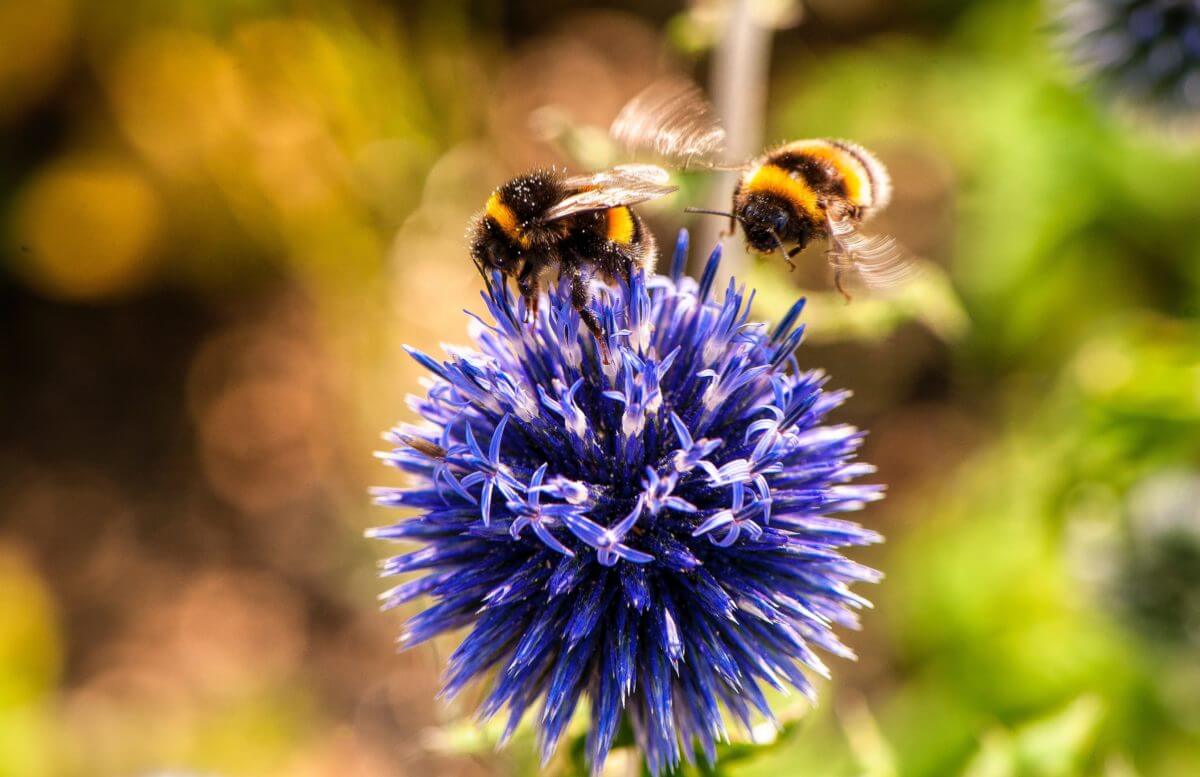
Globally, nature provides services worth around $125 trillion a year, while also helping ensure the supply of fresh air, clean water, food, energy, medicines, and more. Source/WWF Living Planet Report, 2018. Photo/Pexels.
Breaking down silos. Working very closely with domain experts, understanding the real problems and seeing what happens when you deploy your systems on the ground. I love the theory of computing, but I feel like there is also a set of problems that you might never think of unless you were talking to the stakeholders.
If you think about computational challenges, as researchers, we can see some conceptually open problems from a mathematical perspective, but we might miss many interesting and difficult problems by not knowing the problems on the ground. That’s where we really see the power of collaboration.
Are you hopeful that AI could help protect endangered species? Or could we already be too late?
Working with the next generation of student working on AI projects makes me hopeful. This semester, I am teaching an undergraduate class on AI for social good—the students are so hungry to learn about AI and they are so excited about how it can make a difference in the world.
“I like knowing that I am working on real problems—there is a potential that what we are proposing will actually get folded into practice.” Bistra Dilkina.
I’m also seeing the potential for translating our academic research into real, sustained impact. We have been field-testing PAWS (Protection Assistant for Wildlife Security)—a set of algorithms that analyze landscapes and park ranger patrol movements alongside information about past poaching activities and other factors to predict where poachers will strike next—in Cambodia, where rangers have been using the technology to plan their patrols since December.
The results have been very promising. The predictive model guided them to places they wouldn’t normally go and they confiscated over 500 snares in one month. By comparison, they found only 101 snares per month on average in the rest of 2018! We are hoping that rangers around the world will soon be able to use PAWS.
What’s next?
I’m strongly focusing on building up the AI methods to help wildlife conservation, both in the context of reducing animal poaching and in informing nature reserve design decisions. In the summer, my colleague Phebe Vayanos and I received an NSF award for Preserving Biodiversity via Robust Optimization.
While decisions are mostly made on a computer in my line of work, I would love to have more field interactions—in fact, we’re planning a trip to Cambodia this month to see the PAWS software in action. I am also hosting a symposium on AI in Conservation at USC, which will bring together researchers, practitioners and corporate organizations dedicated to preserving Earth’s resources. That’s what is so exciting about this area—there is always more work to be done.
Further reading:
- Adversary models account for imperfect crime data: Forecasting and planning against real-world poachers: S. Gholami, S. McCarthy, B. Dilkina, A. Plumptre, M. Tambe, M. Driciru, et al. AAMAS: International Conference on Autonomous Agents and Multiagent Systems, 2018.
- Discrete Interventions in Hawkes Processes with Applications in Invasive Species Management: Amrita Gupta, Mehrdad Farajtabar, Bistra Dilkina, Hongyuan Zha. Proceedings of the Twenty-Seventh International Joint Conference on Artificial Intelligence, 2018.
- Infrastructure Resilience for Climate Adaptation: Amrita Gupta, Caleb Robinson, Bistra Dilkina. Proceedings of the 1st ACM SIGCAS Conference on Computing and Sustainable Societies, 2018.
- Trade-offs and efficiencies in optimal budget-constrained multispecies corridor networks: B. Dilkina, R. Houtman, C.P. Gomes, C.A. Montgomery, K.S. McKelvey, K. Kendall, T.A. Graves, R. Bernstein, and M.K. Schwartz. Conservation Biology, 2017.
Published on February 11th, 2019
Last updated on April 8th, 2021




